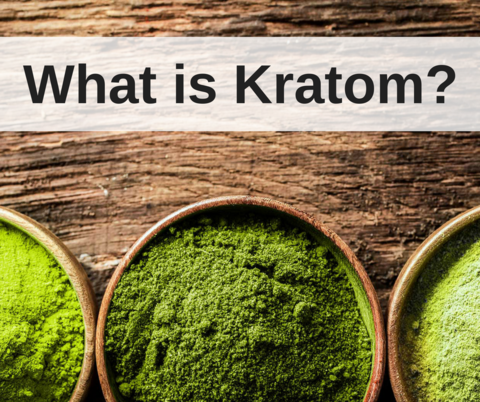Kratom (Mitragyna Speciosa) is a natural herb powder made from the leaves of an evergreen tree that grows abundantly in several countries along the equator in Southeast Asia. The tree is a member of the coffee family. There are several varieties of the kratom tree, each having different colored veins running through their leaves.
Kratom leaves have been used as an herbal remedy for centuries by the people in the region. Kratom has been used in folk medicine as a stimulant (at low doses), sedative (at high doses), recreational herb, pain killer, medicine for diarrhea, and treatment for opiate addiction.
Kratom can be taken in powdered form mixed with water, fruit juice, smoothies, or even mixed with coffee. It is also sometimes available in capsule form. Typical dosage starts at around one teaspoon (2-3 grams). Effects are usually felt 30 to 60 minutes later and typically last 5 to 7 hours.
Research has shown that Kratom has mood-elevating, antidepressant properties.(1) This research, along with much anecdotal evidence, suggests that Kratom may be helpful for many health conditions and issues, as well as providing a general improvement in one’s quality of life. Yellow, white and green vein Kratom leaves tend to be better for mental focus and clarity, energy, mood improvement, athletic performance and focus.
In addition to mood elevation and energy, additional research outlined in Scientific American, found that Kratom also blocks pain.(2) Thus, it may be helpful for arthritis, restless leg syndrome (RLS), fibromyalgia, leg/neck/back pain, muscle pain, aches and pain from colds and flu, migraine, stress, PTSD and anxiety. Kratom leaves with red veins tend to be better for pain relief, stress reduction and relaxation.
Studies have also shown that Kratom may be useful in treating all kinds of addiction, including opiates, prescription pain medications, alcohol, and tobacco.(3)
More detailed information at: http://www.sagewisdom.org/kratomguide.html
1 Phytomedicine. “Antidepressant-like Effect of Mitragynine Isolated”, March 15, 2011
2 Scientific American, “Kratom Ban May Cripple Promising Pain Research”, September 27, 2016
3 Addiction, “Self-treatment of Opioid Withdrawal Using Kratom”, June 28, 2008

